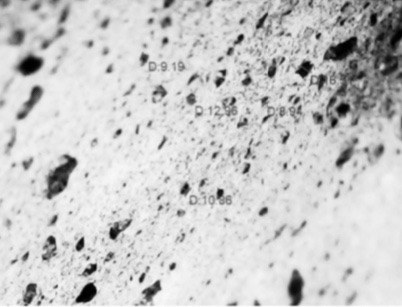New Alternative Recycled Cloth Fiber Based on Cement
DOI:
https://doi.org/10.56261/built.v20.247619Keywords:
recycled cloths, recycling, lightweight composite, building materialsAbstract
This study explores the potential of using recycled cloth fibers from fabric recycling plants and tests the properties of cement mixed with recycled cloth fibers. The composite composed cement, water, and 3 different lengths of recycled textile fiber (short, medium and long fiber). The composition ratio of cement to water to fiber is as follows: 1:1:0.10, 1:1:0.25 and 1:1:0.50 by weight. The physical, mechanical, and thermal properties were measured according to test standards and compared to conventional building materials.
The results found that different cloth fibers based-on cement have the potential to be used in the production of a new alternative material. Using recycled cloth fiber as an ingredient in cement will help reduce the bulk density and thermal conductivity value. The short cloth fiber in the composite results in high density, and compressive strength. Water absorption is low but thermal conductivity is high. When comparing the test properties of the specimens with the standard material, it was found that the specimens with ratios of 1:1:0.10 and 1:1:0.25 passed the non-load bearing wall material and had better properties than the conventional wall blocks in the local market.
Moreover, it can be applied as a sustainable lightweight insulating material for both wall spraying and 3D printing.
Downloads
References
Asasutjarit, C., Hirunlabh, J., Khedari, J., Charoenvai, S., Zeghmati, B., & Shin, U. C. (2007). Development of coconut coir-based lightweight cement board. Construction and Building Materials, 21(2), 277-288.
Bentchikou, M., Guidoum, A., Scrivener, K., Silhadi, K., & Hanini, S. (2012). Effect of recycled cellulose fibres on the properties of lightweight cement composite matrix. Construction and Building Materials, 34, 451-456.
Briga-Sa, A., Nascimento, D., Teixeira, N., Pinto, J., Caldeira, F., Varum, H., & Paiva, A. (2013). Textile waste as an alternative thermal insulation building material solution. Construction and Building Materials, 38,
-160.
Khedari, J., Nankongnab, N., Hirunlabh, J., & Teekasap, S. (2004). New low-cost insulation particleboards from mixture of durian peel and coconut coir. Building and Environment, 39(1), 59-65.
Khedari, J., Watsanasathaporn, P., & Hirunlabh, J. (2005). Development of fibre-based soil–cement block with low thermal conductivity. Cement and Concrete Composites, 27(1), 111-116.
Lertsutthiwong, P., Khunthon, S., Siralertmukul, K., Noomun, K., & Chandrkrachang, S. (2008). New insulating particleboards prepared from mixture of solid wastes from tissue paper manufacturing and corn peel. Bioresource Technology, 99(11), 4841-4845.
Mohammadian, M., & Haghi, A. K. (2013). Recycling and reuse of polypropylene fiber waste. Materiale Plastice, 50(1), 12-17.
Pichardo, P. P., Martínez-Barrera, G., Martínez-López, M., Ureña-Núñez, F., & Ávila-Córdoba, L. I. (2018). Waste and recycled textiles as reinforcements of building materials. In E. Gunay (Ed.), Natural and Artificial Fiber-Reinforced Composites as |Renewable Sources (pp.89-105). IntechOpen.
Sadrolodabaee, P., Claramunt, J., Ardanuy, M., & de la Fuente, A. (2021). A textile waste fiber-reinforced
cement composite: Comparison between short random fiber and textile reinforcement. Materials, 14(13), 3742.
Sangrutsamee, V. (2012). Decorative products and furniture from newly developed recycled paper pulp.
Journal of Architectural/Planning Research and Studies (JARS), 9(2), 95-104.
Sangrutsamee, V., & Khamput, P. (2018). Development and production of artificial log composite for
prefabricated modular home. International Journal of Building, Urban, Interior and Landscape Technology (BUILT), 11, 19-28.
Sangrutsamee, V., Srichandr, P., & Poolthong, N. (2012). Re-pulped waste paper-based composite building materials with low thermal conductivity. Journal of Asian Architecture and Building Engineering, 11(1), 147-151.
Selvaraj, R., & Priyanka, R. (2015). Study on recycled waste cloth in concrete. International Journal of Engineering Research and Technology, 4, 891-895.
Wang, Y., Wu, H. C., & Li, V. C. (2000). Concrete reinforcement with recycled fibers. Journal of Materials in Civil Engineering, 12(4), 314-319.

Downloads
Published
How to Cite
Issue
Section
License
Copyright (c) 2022 International Journal of Building, Urban, Interior and Landscape Technology (BUILT)

This work is licensed under a Creative Commons Attribution-NonCommercial-NoDerivatives 4.0 International License.











